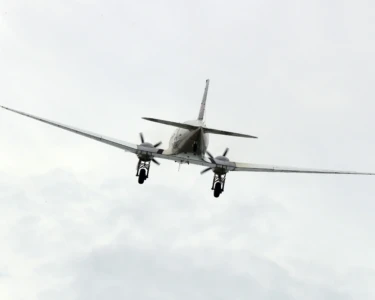In the world of aviation, the precision and reliability of navigation data are paramount for ensuring safe and efficient flight operations.
One of the cornerstones of this data is the ARINC 424 standard, a specification that defines the structure and content of aeronautical navigation information.
Whether for flight planning, in-flight navigation, or air traffic management, ARINC 424 provides the consistent and accurate data required by avionics systems around the globe.
Understanding ARINC 424 is crucial for aviation professionals, from pilots and air traffic controllers to software developers and data analysts.
This comprehensive guide aims to demystify the core elements of ARINC 424, breaking down its complex structure into digestible components. By exploring the key records, fields, and data elements, we will shed light on how this standard underpins modern aviation navigation systems.
In this blog post, we will delve into the history and evolution of ARINC 424, dissect its intricate data structure, and examine the primary components that make it an indispensable part of aviation technology.
By the end of this guide, readers will have a solid understanding of ARINC 424 and its pivotal role in enhancing aviation safety and efficiency.

Primary Components of ARINC 424
ARINC 424 is a comprehensive and complex standard designed to codify a vast array of aeronautical navigation data.
Its structure is composed of multiple interrelated components, each serving a specific purpose in ensuring that aviation systems can rely on consistent, accurate, and up-to-date information.
Understanding these primary components is essential for grasping how ARINC 424 supports the myriad functions of modern avionics.
Records and Sub-records
At the heart of ARINC 424 are its records and sub-records, which are the building blocks of the data format.
Each record type serves a distinct function, encompassing various elements of navigation information such as waypoints, airways, and procedures.
Sub-records provide additional layers of detail and specificity within these primary categories.
Commonly Used Records:
- Waypoint Records: These are fundamental points in the airspace that define navigation paths. They include critical data such as latitude, longitude, and identifiers.
- Route Records: These records specify predefined paths that aircraft follow, including airways and direct routes between waypoints.
- Procedure Records: These encompass standard instrument departures (SIDs), standard terminal arrival routes (STARs), and approach procedures, providing structured paths for aircraft during critical phases of flight.
Field Descriptions
Each record and sub-record in ARINC 424 is composed of multiple fields, each containing specific pieces of information. Understanding these fields is crucial for interpreting and utilizing ARINC 424 data.
Key Fields and Their Significance:
- Waypoint Identifier: A unique code that identifies a waypoint. This is essential for navigation systems to recognize and utilize specific points in the airspace.
- Latitude and Longitude: These fields provide the precise geographical coordinates of a waypoint, which are critical for accurate navigation.
- Waypoint Type: This field indicates the type of waypoint (e.g., VOR, NDB, Fix), helping pilots and systems understand its role and characteristics.
- Altitude Restrictions: Information about altitude constraints at certain waypoints, crucial for maintaining safe separation and efficient flight profiles.
Navigation Data Elements
ARINC 424 encompasses a variety of navigation data elements essential for modern aviation.
These elements, meticulously structured and standardized, ensure that navigation systems can operate with precision and reliability.
The primary navigation data elements include waypoints, routes, and airways, each playing a crucial role in the broader context of aviation navigation.
Waypoints
Waypoints are the cornerstone of aviation navigation. These predetermined geographical points in the sky serve as reference markers for aircraft, guiding them along their flight paths. Each waypoint in ARINC 424 is defined by several key attributes:
- Identifier: A unique alphanumeric code that distinguishes one waypoint from another. This identifier is used universally across navigation systems to ensure consistency.
- Latitude and Longitude: The precise geographical coordinates of the waypoint. These coordinates are crucial for accurate navigation and are presented in a standardized format to facilitate seamless integration across different systems.
- Waypoint Type: This field specifies the nature of the waypoint, such as VOR (VHF Omnidirectional Range), NDB (Non-Directional Beacon), or RNAV (Area Navigation) Fix. Understanding the type of waypoint helps pilots and systems determine how to interact with it.
- Altitude Restrictions: Some waypoints have specific altitude constraints, indicating the minimum or maximum altitudes at which an aircraft can pass over them. These restrictions are critical for maintaining safe separation between aircraft.
Waypoints serve multiple purposes, from defining the path of airways and routes to acting as key reference points in arrival and departure procedures. By standardizing the data related to waypoints, ARINC 424 ensures that navigation systems can interpret and use this information uniformly.
Routes
Routes in aviation refer to the predefined paths that aircraft follow during their journeys. These routes are crucial for organizing air traffic and ensuring efficient use of airspace. In ARINC 424, routes are defined with detailed precision to support various navigation needs:
- Waypoint Sequences: Routes are composed of a sequence of waypoints, each linked in a specific order to guide the aircraft from its departure point to its destination. This sequence ensures that the flight path is clear and consistent.
- Route Designators: Routes are identified by unique designators, such as airway numbers or route names. These designators simplify the communication and identification of specific routes among pilots, air traffic controllers, and flight management systems.
- Direction of Flight: This field indicates the direction in which the route should be flown, typically represented as northbound, southbound, etc. This information helps ensure that traffic flows smoothly and safely.
- Altitude and Speed Constraints: Similar to waypoints, routes can have specific altitude and speed constraints to ensure safe and efficient operation. These constraints are incorporated into the route data to provide clear guidelines for pilots and systems.
Routes play a vital role in managing air traffic, particularly in congested airspace. By providing a structured and standardized representation of routes, ARINC 424 facilitates efficient route planning, coordination, and management.
Airways
Airways are established corridors in the sky that connect multiple waypoints, providing structured paths for aircraft to follow. They are akin to highways in the sky and are a fundamental component of air traffic management. ARINC 424 details airways with the following elements:
- Start and End Points: Each airway is defined by its start and end points, typically marked by waypoints. This clear definition ensures that the airway can be easily identified and followed.
- Intermediate Waypoints: In addition to the start and end points, airways often include intermediate waypoints that provide additional guidance along the route. These waypoints help maintain the structure and safety of the airway.
- Direction and Segment Lengths: The direction of flight along each segment of the airway is specified, along with the distances between waypoints. This information helps pilots and navigation systems plan and execute flights accurately.
- Altitude Restrictions: Airways can also have specific altitude restrictions, ensuring that aircraft remain within safe operational limits while following the airway. These restrictions are crucial for maintaining vertical separation between aircraft.
Airways facilitate efficient navigation by providing clearly defined routes that aircraft can follow, reducing the complexity of air traffic management.
By standardizing airway data, ARINC 424 ensures that navigation systems have access to accurate and reliable information for planning and executing flights.
Advanced-Data Components
Beyond the primary navigation elements, ARINC 424 encompasses several advanced data components that support more complex aspects of aviation navigation.
These components include detailed procedure records, airspace boundaries, and holding patterns.
Understanding these advanced elements is crucial for aviation professionals who work with sophisticated navigation systems and require a deeper level of detail for flight planning and management.

Procedure Records
Procedure records in ARINC 424 are essential for defining standardized flight procedures that enhance safety and efficiency during critical phases of flight.
These include Standard Instrument Departures (SIDs), Standard Terminal Arrival Routes (STARs), and approach procedures.
Standard Instrument Departures (SIDs):
- Purpose: SIDs provide predefined paths for aircraft to follow immediately after takeoff. They help manage the flow of departing traffic and ensure safe separation from other aircraft.
- Structure: SIDs are composed of a series of waypoints and instructions, such as altitude constraints and turn directions. Each SID is designed to take aircraft safely from the departure runway to the en-route structure.
- Key Fields: Important fields in SID records include waypoint sequences, altitude and speed constraints, and specific procedural instructions (e.g., “climb via SID”).
Standard Terminal Arrival Routes (STARs):
- Purpose: STARs guide arriving aircraft from the en-route phase of flight to the approach phase. They help streamline the flow of inbound traffic and reduce the workload on air traffic controllers.
- Structure: Like SIDs, STARs consist of a sequence of waypoints and specific procedural instructions. They ensure that aircraft follow a predictable path to the approach phase.
- Key Fields: STAR records include waypoint sequences, altitude and speed constraints, and procedural instructions (e.g., “descend via STAR”).
Approach Procedures:
- Purpose: Approach procedures provide detailed paths for aircraft to follow during the final phase of flight, leading to a safe landing. These procedures are critical for ensuring safe and efficient landings, especially in complex or busy airspace.
- Structure: Approach procedures include multiple segments, each with specific waypoints, altitude constraints, and instructions. They are designed to guide aircraft from the end of the STAR to the runway threshold.
- Key Fields: Important fields in approach procedure records include initial approach fixes (IAFs), intermediate fixes (IFs), final approach fixes (FAFs), missed approach points (MAPs), and procedural instructions.
Airspace and Holding Patterns
In addition to procedure records, ARINC 424 includes detailed information about airspace boundaries and holding patterns, both of which are vital for effective air traffic management.
Airspace Boundaries:
- Purpose: Defining the vertical and lateral limits of controlled and restricted airspace helps ensure that aircraft operate within designated areas, maintaining safety and regulatory compliance.
- Structure: Airspace records in ARINC 424 delineate the boundaries of different types of airspace, including controlled airspace, special use airspace (e.g., military operations areas), and restricted areas.
- Key Fields: Important fields include the geographic coordinates of the airspace boundaries, altitude limits, and classifications (e.g., Class A, B, C airspace).
Holding Patterns:
- Purpose: Holding patterns are predefined circular paths that aircraft follow while awaiting further instructions from air traffic control. They are used to manage traffic flow, particularly during periods of high congestion or when delays occur.
- Structure: Holding pattern records include information about the holding fix (the point around which the aircraft holds), the direction of turns, leg lengths, and altitude constraints.
- Key Fields: Important fields in holding pattern records include the holding fix identifier, turn direction (left or right), inbound and outbound leg details, and altitude and speed constraints.
Integration with Flight Management Systems (FMS)
ARINC 424’s advanced data components are integral to the operation of Flight Management Systems (FMS), which rely on this detailed information to automate many aspects of flight planning and execution. By providing a rich set of standardized data, ARINC 424 ensures that FMS can accurately interpret and execute complex procedures, manage airspace transitions, and optimize flight paths.
Benefits for Pilots and Airlines:
- Safety: Detailed procedure records and accurate airspace boundaries help maintain safe separation between aircraft and ensure compliance with regulatory requirements.
- Efficiency: Standardized procedures and optimized routes contribute to fuel savings, reduced flight times, and lower operational costs.
- Reliability: Consistent and accurate data across different navigation systems enhances the reliability of flight operations and reduces the risk of navigation errors.
Applications of ARINC 424
ARINC 424 is an indispensable standard in the aviation industry, underpinning numerous applications that enhance the safety, efficiency, and reliability of air travel.
From flight management systems (FMS) to air traffic management (ATM), and even in pilot training and simulation, ARINC 424’s structured and detailed data supports a wide array of critical functions in modern aviation.
Flight Management Systems (FMS)

Integration and Functionality:
- Data Utilization: FMS relies heavily on ARINC 424 data to automate flight planning and in-flight navigation. The standardized waypoints, routes, procedures, and airspace boundaries are integral to the FMS’s ability to compute optimal flight paths.
- Navigation Accuracy: By leveraging ARINC 424 data, FMS can provide pilots with precise navigation information, ensuring aircraft follow the intended routes and procedures accurately.
- Operational Efficiency: The integration of ARINC 424 data allows FMS to optimize fuel consumption, reduce flight times, and improve overall operational efficiency by selecting the most efficient routes and altitudes.
Benefits:
- Enhanced Safety: Accurate and up-to-date navigation data helps maintain safe separation between aircraft and ensures compliance with regulatory requirements.
- Improved Situational Awareness: Pilots receive real-time updates and alerts, enhancing their situational awareness and decision-making capabilities.
- Cost Savings: Optimized flight paths and efficient fuel management contribute to significant cost savings for airlines.
Air Traffic Management (ATM)

Role in ATM Systems:
- Traffic Flow Management: ARINC 424 data is crucial for managing the flow of air traffic, particularly in busy or congested airspace. The standardized procedures and airways facilitate smooth and coordinated traffic movements.
- Conflict Detection and Resolution: By providing detailed information on aircraft positions and intended flight paths, ARINC 424 supports advanced ATM systems in detecting potential conflicts and implementing resolution strategies.
- Coordination and Communication: The standardized data ensures seamless communication and coordination between different air traffic control centers, enhancing the overall efficiency of air traffic management.
Benefits:
- Reduced Delays: Efficient management of air traffic flow helps minimize delays, improving the punctuality of flights.
- Enhanced Safety: Accurate navigation data and standardized procedures reduce the risk of navigation errors and ensure safe operations in complex airspace.
- Increased Capacity: Optimized traffic flow and conflict resolution capabilities allow for increased airspace capacity, accommodating more flights without compromising safety.
Training and Simulation
Use in Pilot Training Programs:
- Realistic Scenarios: Training programs utilize ARINC 424 data to create realistic flight scenarios that closely mimic real-world conditions. This helps pilots develop the skills and knowledge required to navigate using standardized procedures and routes.
- Procedure Training: Detailed procedure records, including SIDs, STARs, and approach procedures, are used to train pilots on executing these critical phases of flight accurately and efficiently.
- Emergency Response: Simulators equipped with ARINC 424 data can replicate emergency situations, allowing pilots to practice and perfect their response strategies.
Benefits:
- Enhanced Competency: Pilots trained with realistic scenarios and standardized procedures are better prepared for real-world operations, enhancing their overall competency and confidence.
- Safety Improvements: Training with accurate and detailed data helps reduce the risk of pilot errors, contributing to safer flight operations.
- Cost-Effective: Using simulators for training reduces the need for expensive real-world flight training, providing a cost-effective solution for pilot education.
Conclusion
In conclusion, ARINC 424 stands as a cornerstone in the aviation industry, providing a comprehensive framework for managing navigation data with precision and reliability.
Its detailed and standardized data elements are essential for the efficient operation of flight management systems, seamless air traffic management, and effective pilot training programs.
By ensuring consistent and accurate information across various platforms, ARINC 424 enhances the safety, efficiency, and overall performance of modern aviation systems.
Looking ahead, ARINC 424 will continue to play a critical role as aviation technology evolves. Its integration with next-generation avionics and advanced air traffic management systems will further enhance the capabilities and accuracy of navigation.
Additionally, innovations in pilot training, such as the use of virtual and augmented reality, will benefit from the robust data provided by ARINC 424, ensuring that pilots are well-prepared for the complexities of modern airspace.
As the aviation industry advances, ARINC 424’s role in supporting safe and efficient air travel will remain indispensable.






